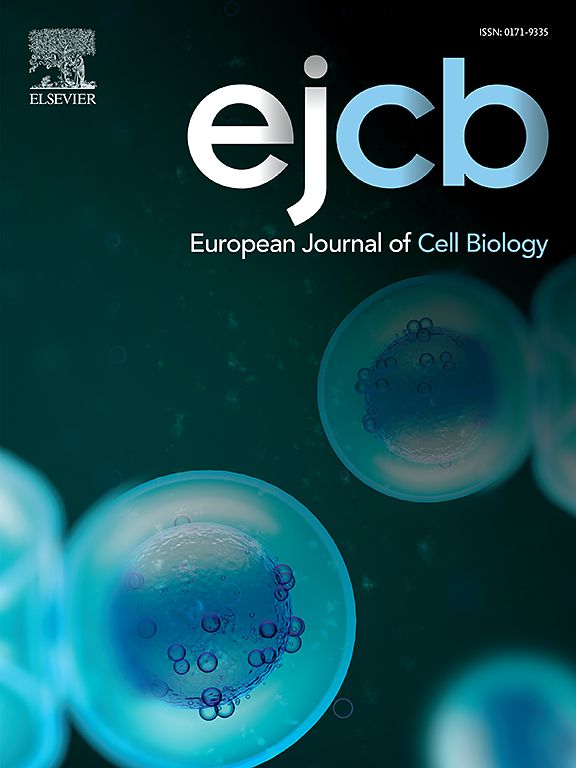Deciphering the landscape of post-translational modifications in the centrosome upon T cell activation
IF 4.3
3区 生物学
Q2 CELL BIOLOGY
引用次数: 0
Abstract
The shift from quiescent to effector T cells (TC) is controlled at the translational level. Post-translational modifications (PTMs) are key factors in the diversification of protein function. Advancements in mass spectrometry-based proteomics enable proteome-wide, hypothesis-free quantitative PTM analysis. Current research highlights the centrosome role in TC activation. Here the diversity of PTMs in the TC centrosome is studied by analyzing centrosome-enriched fractions from human resting and activated T lymphoblasts. Our results show that oxidative modifications predominate in this organelle, with tryptophan as the most frequently oxidized residue. These PTMs are enriched in proteins involved in translation, vesicular trafficking, cytoskeleton organization, among others. We also demonstrate the existence of PTM changes on specific protein regions during TC activation in Myh9 (hyperoxidized), and Gzma (hypoxidized). These hyper- or hypoxidized proteins display distinct functional distributions. Our study provides the first comprehensive PTM mapping of the TC centrosome, underscoring the PTM regulatory role in TC activation.
解读T细胞活化时中心体翻译后修饰的景观
从静止T细胞到效应T细胞(TC)的转变在翻译水平上受到控制。翻译后修饰(ptm)是蛋白质功能多样化的关键因素。基于质谱的蛋白质组学的进步使蛋白质组范围内,无假设的定量PTM分析成为可能。目前的研究强调中心体在TC激活中的作用。本研究通过分析人静息和活化的T淋巴母细胞的中心体富集组分,研究了TC中心体中PTMs的多样性。我们的研究结果表明,氧化修饰在这个细胞器中占主导地位,色氨酸是最常见的氧化残留物。这些ptm富含参与翻译、囊泡运输、细胞骨架组织等的蛋白质。我们还证明了在Myh9(高氧化)和Gzma(低氧化)的TC激活过程中,PTM在特定蛋白质区域上的变化。这些高或低氧化的蛋白质表现出不同的功能分布。我们的研究首次提供了TC中心体的全面PTM图谱,强调了PTM在TC激活中的调节作用。
本文章由计算机程序翻译,如有差异,请以英文原文为准。
求助全文
约1分钟内获得全文
求助全文
来源期刊

European journal of cell biology
生物-细胞生物学
CiteScore
7.30
自引率
1.50%
发文量
80
审稿时长
38 days
期刊介绍:
The European Journal of Cell Biology, a journal of experimental cell investigation, publishes reviews, original articles and short communications on the structure, function and macromolecular organization of cells and cell components. Contributions focusing on cellular dynamics, motility and differentiation, particularly if related to cellular biochemistry, molecular biology, immunology, neurobiology, and developmental biology are encouraged. Manuscripts describing significant technical advances are also welcome. In addition, papers dealing with biomedical issues of general interest to cell biologists will be published. Contributions addressing cell biological problems in prokaryotes and plants are also welcome.
 求助内容:
求助内容: 应助结果提醒方式:
应助结果提醒方式:


